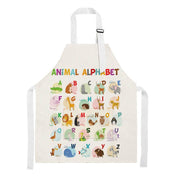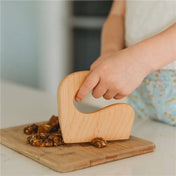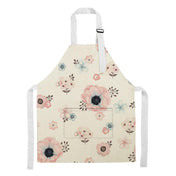Everything You Need to Know About Open Ended Play
Children need structure and stability in their lives. At the same time, they also need an outlet for their seemingly-endless imagination and creativity.
As parents, it is important that we find ways to encourage our child’s creativity. However, with so much emphasis on structured playing and organised activities, the balance can be really difficult to achieve. This is exactly where open-ended play has a role.
Open-ended play is the perfect opportunity for your child to exercise their imagination, as well as their social skills and emotional intelligence.
What Is Open-Ended Play?
Open-ended play is a kind of play that encourages children to freely express their imaginations, desires and creativity.
There are no rules. There are no instructions. There are no guidelines. There is no right way or wrong way to play. In open-ended play, children are left to play however they choose.. This allows them to exercise their independence as individuals, while also expressing themselves fully through their innate creativity.
What makes open-ended play so amazing is that it is so easy to do. You can literally set your child’s play area up for open-ended play with nothing more than wooden blocks and fabrics. Sensory Rice, Play Doh, Wooden Stackers and Miscellaneous Wooden Objects are also wonderful open ended toys. Anything that doesn’t dictate how your child should play, is perfect.
You’d be surprised how quickly a child’s imagination runs wild when presented with an opportunity!
Why Is Open Ended Play Important?
Children benefit from open ended play in a number of ways, namely:
Does Open-ended play encourage children to take charge and make decisions?
Without a specific set of instructions, children are encouraged to practice their decision-making skills. Also, as a result of being placed in a group with no structure, children will eventually exercise their creativity and encourage others to do the same. This gives them the opportunity to become creative leaders, which plays a crucial role in the development of a child’s critical decision-making skills as they grow up.
Why does Open-ended play teach children to experience new ideas and concepts?
Again, because there are no strict set of guidelines or rules, there’s really no “wrong” nor “right” way to play in open-ended play. This means that children are less concerned about how to play properly and are allowed to unleash their creativity at its fullest. They can practice their drawing skills, handwriting skills, or whatever it is that they want, without really worrying about whether they are doing it correctly.
As children become less afraid to make mistakes, it fosters a curious mindset within them and a positive attitude towards learning new concepts and ideas.
Why is Open-ended play, crucial to early childhood development?
The ability to make decisions confidently as individuals and solve problems on their own is a skill that a lot of parents would love their children to possess. As it turns out, open-ended play plays a huge factor in fostering the necessary intellectual abilities in children that sets them towards the path of a future where they grow up to become strong and independent individuals.
How to Encourage Open-Ended Play in Children
Everything starts at home. That includes your child’s love and affinity for open-ended play.
Here are a couple of tips on how you can encourage your child to foster a love for open-ended play at home:
- Give your child learn the opportunity to learn to entertain themselves before supplying them with entertainment. Boredom isn’t the greatest feeling in the world, but if you let them, your child will quickly learn to find ways of combating boredom. Do this often enough and you’ll discover that most, if not all children will turn to their creative instincts when they are bored.
- Arts and crafts with direction is great, but have you ever sat back and just let your child create something on their own? Or better yet, have you asked your child how he or she wants to play? Encouraging your child to make their own decisions can help to foster independent and creative thinking.
- It’s tempting to fill your child’s day with extracurricular activities, structuring every moment of their lives. Over structuring your little ones life may put your child on a path where they won’t know what to do when they don’t have something scheduled, or pre-prepared. Freeing some time in the day for your child is a great way to accommodate free play, or at the very least, a chance to simply relax and find ways to entertain themselves out of boredom.
- Nondescript items are your best friends when it comes to open-ended play. This can literally be anything. One of the reasons our Rainbow Stackers are so popular is that they can be used thousands of different ways over the course of many many years. In fact, rainbow stackers or peg dolls in the eyes of a child can be absolutely fascinating.
- Art is also a crucial part of open-ended play. Ideally, there should be a space in your home where children can paint, write, and play with dough or sensory rice however they see fit.
- Children learn from the adults in their lives and you can encourage more open ended play by simply switching up your language. Try moving away from definitive statements and questions and rephrase with open-ended statements and questions.
For example, saying things like, “What would you like to do today?” Is better for your child, than telling them what they will do today. Asking your little one, “What they are most excited about for tomorrow?” rather than planning the day ahead for them will help them to take some ownership over the next days events, in turn helping them to feel empowered and more engaged.
This subtle but significant shift in phrasing can do wonders for your child’s inquisitive and growing young mind.
What Are Open Ended Play Materials?
As long as it’s safe and won’t hurt them, it makes for an excellent open-ended play material.
Remember that stick that your child just won’t put down no matter what you do? Yes. That’s a good example. Open-ended play doesn’t need fancy toys. It can be as simple as a leaf on the ground, a wooden stick, a bag of Bamboo Blocks, or as fancy as a Balance Board, or Pikler Climbing Frame.
Basically, the entire world is made up of open-ended play materials.
The best Open-Ended Play Ideas
- Block play
- Sand
- Drawing
- Water Play
- Play Dough
- Wooden Peg Dolls
- Pikler Triangle blanket and pillow forts
- Loose Parts Play
- Wooden Blocks
If it’s an activity without any set rules or outcome, we encourage you to give it a go.
Just make sure that you supervise your child. As much as children need freedom to express their imagination and creativity, they still need constant adult supervision.
What Are the Other Benefits of Open Ended Play?
1. Open-ended play can be both an individual and group activity
The best thing about open-ended play is a child can play on their own or with others. At home, your child can enjoy open ended play activities on their own, or with just you or another adult supervising them. This is especially important for younger children who might still have difficulty adjusting to other kids.
As they grow older, open ended play gives children an opportunity to socialize and experiment with ideas as a group. They also get to learn more about how to communicate with each other in a stress-free environment.
2. It’s a stress-free activity
The pressure of making something look exactly like how it should be is not good for both adults and children alike.
Taking that point of contention away relieves much of the stress associated with play. This allows children to fully express themselves however they want to. It makes them develop a positive mindset towards experimentation and new things, which can foster a lifelong love and passion for learning, among many other things.
3. It’s great for your child’s creativity and imagination
As the common saying goes, “the world is your oyster.”
Or, in this particular case, it can be anything what a child wants it to be. Their painting can be a house, or you, their family, their friends, or however they interpret it. The same goes for anything that they created and did with all of the materials around them.
Those pile of pillows could even be a castle for all we know!
There’s literally no limit to our imagination and creativity. That’s doubly true for children when they’re encouraged to apply themselves.
4. Your child learns how to make decisions
When you decide everything for your child, it leaves them little chance to decide things on their own. This makes them dependent on instruction and structure. Although that’s not inherently bad, too much dependence is not good either.
Open-ended play lets your child make their own decisions.
Again, in the eyes of your child, that pile of pillows could be a castle and he could be a prince on his way to save his princess, or a princess who’ll be doing the saving this time around.
In conclusion open-ended play is your time to step back as a parent or guardian and let your child take the lead.
Remember, you’re not in charge here. The children are. Their imagination and creativity are in full display, for better or for worse. Mistakes can and will happen, but that’s okay. There’s no end-goal here. You don’t even have to clean nor fix anything that they ruin, unless, of course, they ask you for help, in which case, you should certainly help.
The main purpose of open-ended play is to create a relaxing environment where your little ones can run their respective trains of thought at full speed.
You’ll know you did the right thing when you see your child completely engaged and entranced in whatever he or she is doing.




